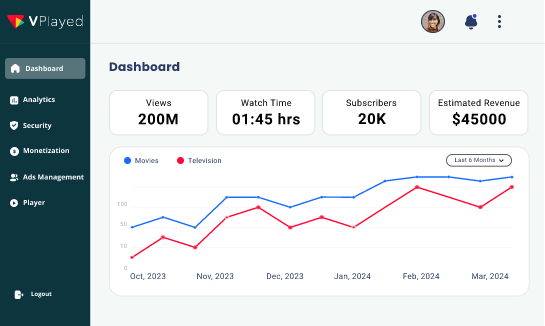Start and Grow Your VOD Streaming Platform With 1000+ Features & 10+ Revenue Models.
Request a Free DemoWhat are the Video On Demand (VOD) Business Models ?
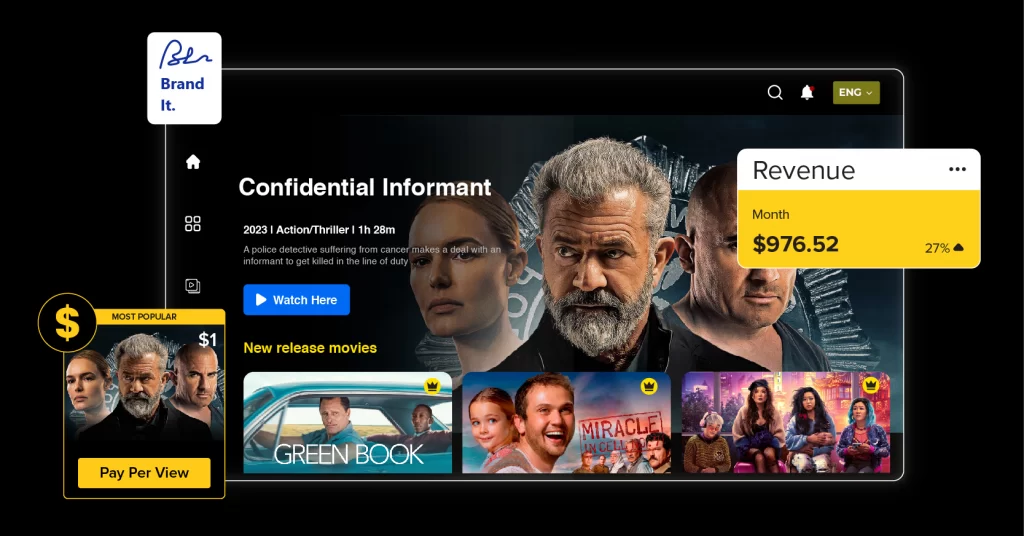
The video on demand business version has received massive traction during the last decade. Thanks to its extraordinary convenience and versatility.
But why is it so special? What fuelled the growth of the VOD business? Unlike traditional tv, a video on demand allows customers to look at videos every time.
The fixed broadcasting time table now can’t limit the customers.
As a result, there has been a considerable shift from linear TV to online streaming platforms, specifically VOD systems. This transition has opened up new revenue streams and business models for content providers and vendors.
In reality, the global VOD market was valued at $69.55 billion in 2021. However, its miles are projected to grow at a CAGR of 17.6%, attaining $257.59 billion by 2029. (Techopedia)
So, if you are a content owner, it is imperative to understand the dynamics of the VOD enterprise, VOD sales models, the blessings of VOD, etc.
One thing we can strongly say is that spending the next five mins on this blog will provide you with a wealth of information — nearly the whole thing about Video on Demand.
- Fully Customizable
- Lifetime Ownership
- On-Premise/On-Cloud
- 100% White-label
- Zero Revenue Share
- Hire Developers
Table of Contents
What is the Video On Demand (VOD) Business Model?
Video on demand (VOD) is a way to watch videos whenever possible, at your comfort.
It’s like having a giant library of films, TV shows, vlogs, and online sermons that you may get right of entry to whenever out of your laptop, TV, or smartphone.
Unlike traditional TV, you need not look forward to a specific time for the show to begin.
It offers you the freedom to watch what you like while you like. The VOD enterprise version involves a couple of dimensions that make a contribution to its functioning.
Firstly, Video on demand platform acquire a wide variety of content in collaboration with content creators and production studios.
Some VOD companies additionally produce unique content. It includes films, TV shows, documentaries, sports events, and online sermons.
This form of content is essential to attract and interact with a numerous target market. Secondly, VOD systems make content accessible to customers through online streaming.
They usually provide a consumer-pleasant interface where viewers can seek, choose, and watch their preferred content. Personalized guidelines, genre-based categories, and search functionalities enhance the viewing experience to a much greater extent.
Thirdly, VOD businesses additionally emphasize user engagement and retention. They can also release unique and also distinct content to attract new subscribers and maintain current ones.
Moreover, they put money into user experience improvements. It consists of features like high quality video streaming, offline downloads, cross-device compatibility, and many others.
In a nutshell, the concept is to ensure that visitors have an enjoyable streaming experience.
Different Types of VOD Business Models to Generate VOD Revenue
There are several types of Video on Demand (VOD) business models in the market. And each with its own character and ways of generating revenue.
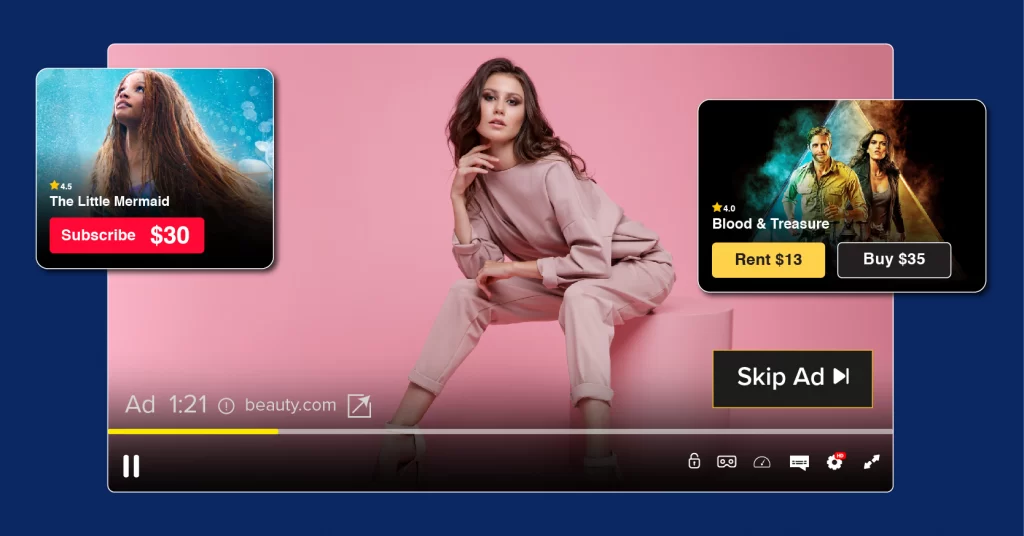
1.Subscription-based VOD (SVOD)
It is by far the most common VOD business model. In SVOD, users pay a monthly/annual fee for unlimited access to a library of content.
Some popular VOD platforms like Netflix and also Disney+ operate on a subscription-based model.
| Pros of SVOD Business Model | Cons of SVOD Business Model |
| Unlimited access to a wide range of content. So, value for money (for consumers). | Over-dependence on the platform’s library. |
| Establishes a constant source of income due to recurring payments. | Ongoing costs may cause subscription fatigue to an average user. |
2.Transactional VOD (TVOD)
This VOD business model allows users to rent or purchase individual movies or shows on a pay-per-view basis. Here, users have the flexibility to choose specific content without needing a subscription.
Examples of transactional VOD platforms include iTunes and Amazon Prime Video.
| Pros of TVOD Business Model | Cons of TVOD Business Model |
| Flexibility to select and pay for specific content. So, it provides more control to users. | Additional costs for each rental or purchase can accumulate depending on viewing habits. |
| No dependence on a subscription. It allows users to engage with content on their own terms. | Limited availability of certain content. Because not all movies or shows may be available for rental or purchase on platforms. |
_____________________________________________________________________
✨ Read Also : Everything You Need to Know About VOD App Development
_____________________________________________________________________
3.Advertising-supported VOD (AVOD)
This VOD model offers free access to content but with advertisements. Users can enjoy a wide variety of content without paying a subscription fee.
Platforms like YouTube and Hulu (with ads) operate on this model.
| Pros of AVOD Business Model | Cons of AVOD Business Model |
| Free access to content, making it accessible to a wider audience. | Interruptions caused by ads may disrupt the viewing experience. |
| No subscription fees. It provides an alternative for users who prefer not to pay for streaming services. | Limited availability of certain content. Some content is always kept exclusive for subscription-based models. |
4.Coupons and Promotions
It offers discounts, promotions, or coupons to attract and retain new users. This business model aims to incentivize users to engage with content through cost savings or exclusive offers.
| Pros of Coupons and Promotions | Cons of Coupons and Promotions |
| Cost savings for users through discounts and promotions. | Limited availability of such offers. Promotions may be time-limited or restricted to specific platforms or content. |
| Attracts new users to specific platforms, potentially increasing viewership and engagement. | Effectiveness may vary depending on user preferences and the perceived value of the offered discounts or promotions. |
5.Premium Video on Demand (PVOD)
This VOD business model is somewhat similar to TVOD. However, it allows users to rent newly released movies at a higher price than standard rentals.
It primarily caters to theater-going audiences as it offers the convenience of watching new releases from the comfort of home. Platforms may offer PVOD options for movies that have recently left theaters.
| Pros of PVOD Business Model | Cons of PVOD Business Model |
| Early access to new movie releases. It effectively eliminates the wait for new releases on VOD platforms. | Higher rental costs compared to standard rentals, which may deter some users. |
| The convenience factor. The ability to watch new releases without going to theaters offers users the utmost convenience. | Availability of new releases may vary, depending on licensing agreements and release strategies. |
| It eliminates most of the ancillary charges involved in theater visits like fuel expenses, parking charges, etc. |
6.Pay-per-view (PPV)
It is a VOD business model where users pay a fee to access specific live events, such as sports matches or concerts. Platforms offering live sports events often combine this model with a Live to VOD platform, allowing users to re-watch or access the recorded events on-demand after the live broadcast.
| Pros of Pay-per-view | Cons of Pay-per-view |
| Access to live events that may not be available through other VOD models. | Higher costs for individual events, especially for a premium or highly anticipated content. |
| No long-term commitments. It allows users to pay for only those events they are interested in. | Limited availability of events, as pay-per-view options may only cover some live events. |
Looking To Build Your Own VOD Platform?
Start and Grow Your Video Streaming Service With 1000+ Features & 10+ Revenue Models.
 Highly Customizable
Highly Customizable Life Time Ownership
Life Time Ownership Own 100% of Your Revenue
Own 100% of Your Revenue
 Full-Branding Freedom
Full-Branding Freedom
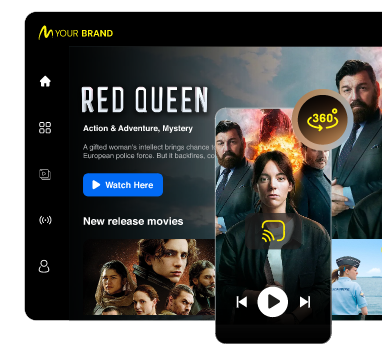
7.Hybrid VOD models
They combine multiple business models and offer the best of both worlds. They may offer a combination of subscription-based, transactional, or ad-supported options.
For instance, Hulu provides both ad-supported and ad-free subscription plans.
| Pros of Hybrid VOD Business Models | Cons of Hybrid VOD Business Models |
| Flexible payment options. This model lets users choose the plan that fits in their pocket. | Complexity in managing multiple VOD revenue streams. Sometimes, it may need additional resources and coordination. |
| It offers a diverse income source for platform owners. They are no longer confined to one VOD revenue stream. | Potential for conflicting user experiences depending on the chosen model. For example, users on ad-supported plans may experience interruptions, while premium subscribers may enjoy ad-free, uninterrupted viewing. |
Benefits of a VOD Business Model
A video-on-demand business model offers a number of benefits for both platform owners and end viewers. Few of the VOD business model benefits are listed below.
- Reach a wider audience
- Increase viewership and engagement
- Generate Recurring VOD revenue
- Monetize content in different ways
- Personalized user experience
With this being clear, let us see how the VOD business model brings benefits to both the owners and the viewers of such platforms. Let’s start the exploration.
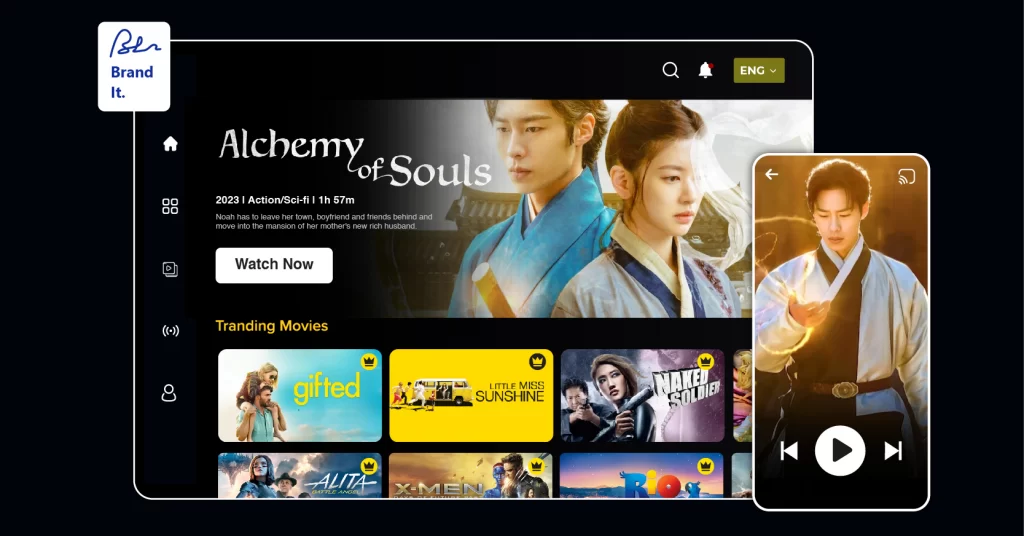
1.Reach a Wider Audience
VOD distribution is a convenient means for platform owners to reach a broader consumer market. It totally eliminates the limitations imposed by traditional TV schedules. With VOD, viewers can access content anytime and at any location too.
For instance, a TV show that is broadcast at a set time may be inconvenient for some viewers because they have other plans. But with VOD platforms like Netflix or Hulu, You are free to watch the show when it is convenient for your schedule.
Indeed, broadening the reach makes it possible to attract viewers from all over the globe. And it also means there is a bigger chance for something to become truly popular around the world.
2.Increase Viewership and User Engagement
Using VOD streaming, traditional broadcasters can increase viewership and user engagement. Many more types of exclusive video resources, particularly varieties one could not imagine on traditional media, are currently available through VOD platforms.
In addition, VOD services permit viewers to set up their experience and select the program order and time of duration.
3.Generate Recurring VOD Revenue
One of the great advantages of a VOD distribution model is the creation of steady earnings. Services such as Netflix charge a single monthly subscription or annual fee for unlimited use of their content libraries.
This stable income allows content creators across various niches to be able to plan ahead and put out some new creations before long. That ensures there will always be fresh feeder for those eager subscribers out there whom you want happy customers too.
However, maintaining those subscribers from one month to the next, and also offering engaging content, are very important if you are to have sustained success.
4.Monetize your content in different ways
For content owners who use the VOD platform as their model — gone are the hard times when you couldn’t make much money from it.
Besides subscription models (SVOD), you can deploy video monetization models like pay-per-view, ad-based, PVOD, catch-up TV, etc.
However, achieving a reasonable balance between video monetization and user experience is vital. Too many ads will surely affect that.
5.Personalized User Experience
In general, an online video streaming platform on the web offers unparalleled variability and a unique viewing experience.
Usually, a user will decide for himself what to view, when, and how long he or she is in front of the screen. That means complete power really lies with users.
In addition, viewers can tell what their favorite genres and shows are and receive personalized recommendations on the basis of their viewing habits.
Conclusion
Without a doubt, the business model for Video on Demand has thoroughly shaken up the ecology of streaming. Besides its unparalleled flexibility, this freshly consumed medium has unspeakably great comfort.
In this blog, we have talked extensively about various VOD business models, their pros and cons and the advantages they offer.
If you have an idea to develop a streaming business using this model i.e. VOD business and need assistance with where to start, just feel free to contact us or schedule a 30-minute phone call! We are here in service to you, and ready to help at any time.
Footer- Request Demo Book a Live, Personalized Demo
- Contact Sales Reach Out to Our OTT Experts
Frequently Asked Questions(FAQ):
Video on Demand (VOD) business models comprise on-demand content services where users can view videos at their convenience. To view videos, individual users pay subscription costs or subscribe to one-time service payment options. Users can use the service to watch movies, TV and other video content transmitted through the Internet.
Here are the different VOD revenue models: SVOD, TVOD and AVOD. SVOD is where subscribers pay a monthly flat fee for unlimited viewing of any video titles while TVOD involves pay-per-view or rental fees for consuming individual programs and movies. On the other hand, AVOD uses advertising revenues to offer free access to content while driving income from pre-roll, mide-roll, and post-roll commercials.
For platform owners, it brings in repeat revenue and media streams that span the entire globe, plus a rich library of content can be exploited. It also opens many doors for targeted ads through increasing amounts of video content. As for customer retention, it broadens the horizons.
To select the right VOD revenue model, consider your content lineup, its target audience, and how you plan to make money from it. For example, SVOD is able to serve those with extensive content catalogs. TVOD is fine for premium and/or exclusive content. In contrast, AVOD can widen its target audience and rely to some extent on advertising revenue.
A VOD business model brings in a lot of money. To monetize your VOD business, first implement your chosen revenue model (SVOD, TVOD, AVOD, PPV). Second, create high-quality content which is suitable for watching by your users and that attracts a loyal viewer base. In addition, spend wisely to acquire new users and improve the overall user experience.
